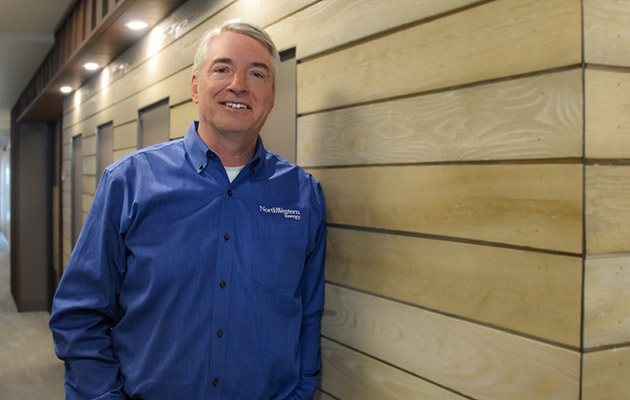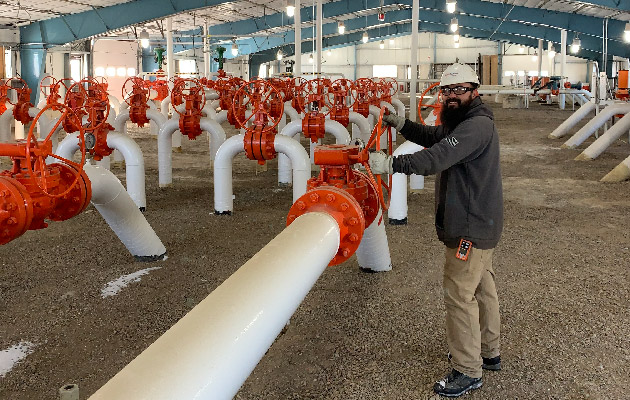Advancing Clean Energy
Advancing Clean Energy

Our commitment at NorthWestern Energy is to provide our customers and communities reliable, affordable and responsible critical energy infrastructure and essential service. We are stewards of over $7 billion in electric and natural gas infrastructure dedicated to serve our customers in Montana, South Dakota, Nebraska and Yellowstone National Park. In 2022 we expect to invest another $582 million of capital in this infrastructure. Because of the special places we are privileged to serve, environmental stewardship is core to who we are and what we do.
While staying true to our core responsibilities, we are also committing to achieve carbon neutrality in our electric and natural gas operations by 2050 – net zero carbon and methane emissions. This will allow us to do our part, as a relatively small company serving a large and dynamic region, to help achieve the goal of limiting the global temperature increase to less than 2° Celsius (3.6° Fahrenheit).
Our Net Zero commitment is part of our much larger focus on Environmental, Social, and Governance (ESG) work. Moody’s Investor Services has rated NorthWestern’s corporate governance practices fifth best among all publicly traded energy and utility companies in North America. For the past two years, an internal ESG team has undertaken a complex project to identify and disclose an extensive array of ESG practices and policies, and also identify and address gaps – places where we can, will, and are doing better. Our President and Chief Operating Officer, Brian Bird, has led that effort as a core part of his duties. To learn more about other aspects of ESG, please visit our ESG web page.

Our Net Zero commitment also builds on and advances our 2019 pledge to reduce the carbon intensity of our Montana electric supply portfolio ninety percent by 2045 as compared to a 2010 baseline. The 2014 acquisition of the run-of-the-river Montana hydro system alone helped us achieve a fifty-two percent reduction in carbon intensity in our Montana electric portfolio. At the time we adopted our Montana electric supply goal, we explained that we would build on that first step. Adopting a company-wide Net Zero commitment is the next important step.
Setting a company-wide net zero target is only one part of our long-standing environmental commitment. To learn more about our environmental programs, please read our environmental report and take a look at the current issue of Bright magazine.
“Sustainability” requires meeting today’s needs while preparing to meet tomorrow’s.

Recently we experienced a multi-day peak energy demand period, with sub-zero temperatures across our electric service territory. Both summer and winter extended peaks typically occur during high pressure, when wind resources do not produce power. The peaks last much longer than can be served by current-generation battery storage. We have about 450 megawatts of wind on our Montana system, for example, but it was at times producing little or no power during this February 2022 peak. This is a reminder of our core responsibility to ensure reliable service to our customers, and of the wisdom of a responsible transition, building on our existing relatively low-carbon portfolio.
This Net Zero report commits to a sustainable transition, and describes a variety of actions in both our electric and natural gas operations, including continuing the transition in our electric supply portfolio; expanded energy efficiency and new product offerings; enhanced natural gas pipeline operations; supporting development of alternative fuels; and helping to create an Electric Vehicle infrastructure. Our investments in the electric and gas transmission and distribution systems also support our goal, for example through deploying grid control systems and installing over 700,000 advanced meters, that together will improve efficiency and reliability; and, converting 88,000 street and other lights to LEDs. Similarly, our engagement with multi-state programs such as the Southwest Power Pool (South Dakota electric) and the Western Power Pool Resource Adequacy program (Montana electric) will allow for enhanced electric supply reliability and efficiency. We are also committed to working with our customers to help them achieve their sustainability goals.
Through pilot programs; participating in a clean technology venture fund and modest direct investment; closely following work at the national labs, Department of Energy and other technical bodies; and, through industry efforts, we are actively monitoring a range of technologies that may be candidates to help meet customer needs as their performance improves and costs decline. In the meantime, we continue to focus on our customers’ price and reliability exposure to volatile energy markets, especially for periods of long-duration peak demand. Our minority interest in four jointly-owned coal plants serving Montana and South Dakota currently accounts for only about ten percent of our regulated rate base, but provides critical service to our customers as other technologies develop. Resource planning statutes and regulations require that we pursue the least cost means to meet our customers’ electric supply needs. We believe advances in technology will allow us to avoid adding any incremental carbon-emitting generation resources after 2035.
Our commitment extends to greenhouse gas emissions in the company’s control, such as emissions from owned generation and leaks (“fugitive emissions”) from natural gas pipelines (Scope 1); and, indirect emissions from energy consumed to heat, cool and power our facilities (Scope 2). This plan does not broadly address upstream or downstream emissions (Scope 3); however, our support for energy efficiency programs and work with upstream suppliers and downstream customers does help reduce these sources of greenhouse gas. Additionally, the substantial amounts of wind and solar energy we purchase from others are generally not counted as helping to meet our goal (because they are classified as Scope 3). On the other hand, by far the most carbon-intensive electric generation that delivers power to our system are several Qualifying Facilities from which we are required to purchase power under federal and state law (these are also within Scope 3).

We are a fully regulated provider of critical infrastructure and essential service. Therefore, our success in meeting our obligations to our customers and the communities we serve depends on good public policy and wise policymakers. We know that policymakers in the states we serve are committed to reliable, adequate, and affordable service, and a strong customer focus. We support policies that enable investment in critical infrastructure and responsible stewardship. We oppose polices that are unfair to some customers or are financially or otherwise unsustainable. We are excited to take this next step in our ongoing program of environmental stewardship. Working collaboratively with policy makers, vendors, communities and especially our customers - we will succeed.
Sincerely,
Brian Bird, President & CEO


